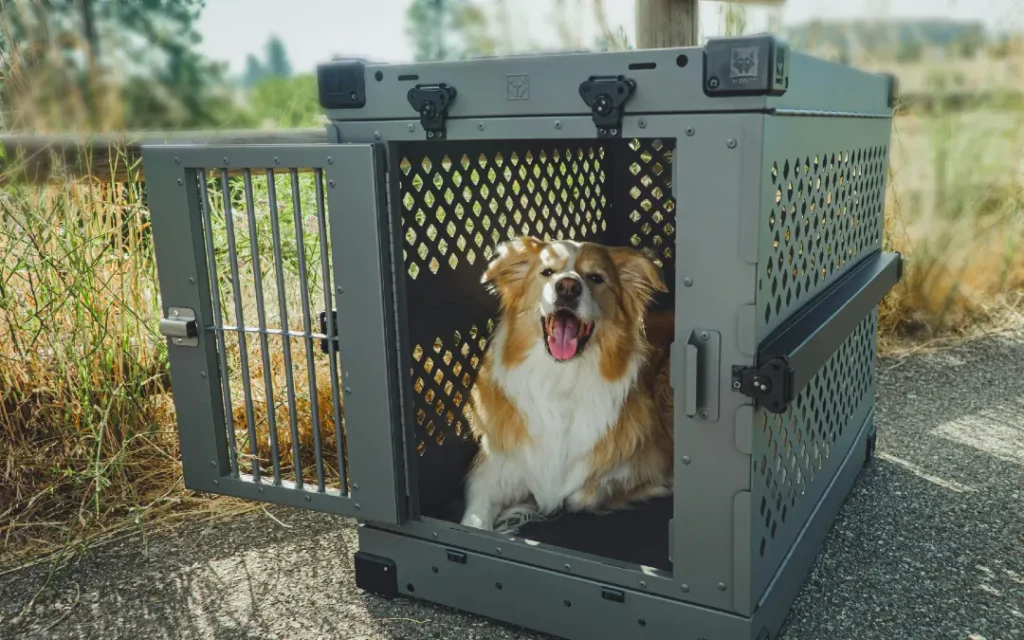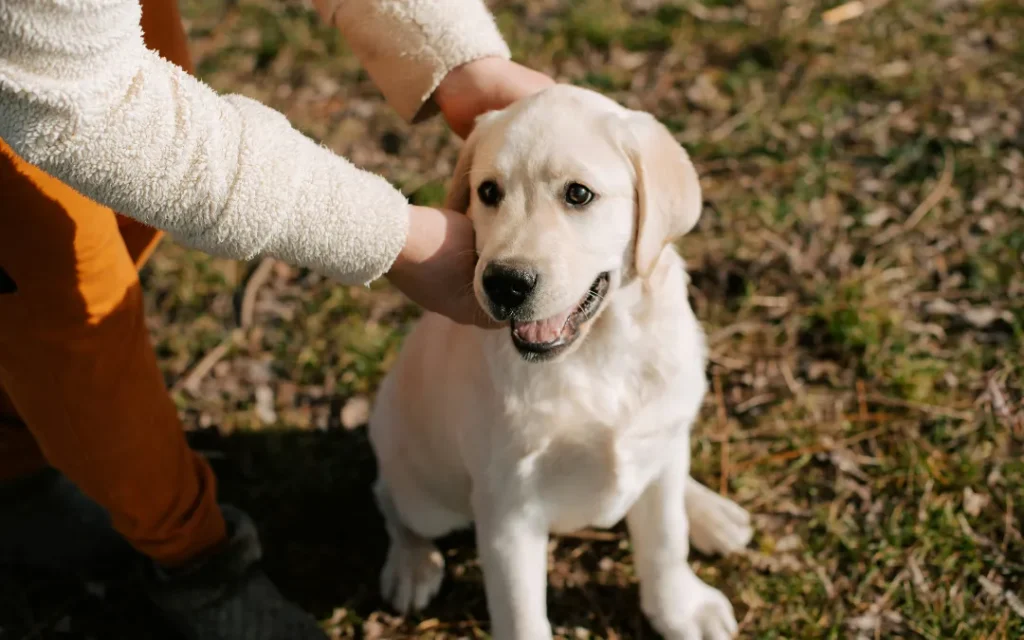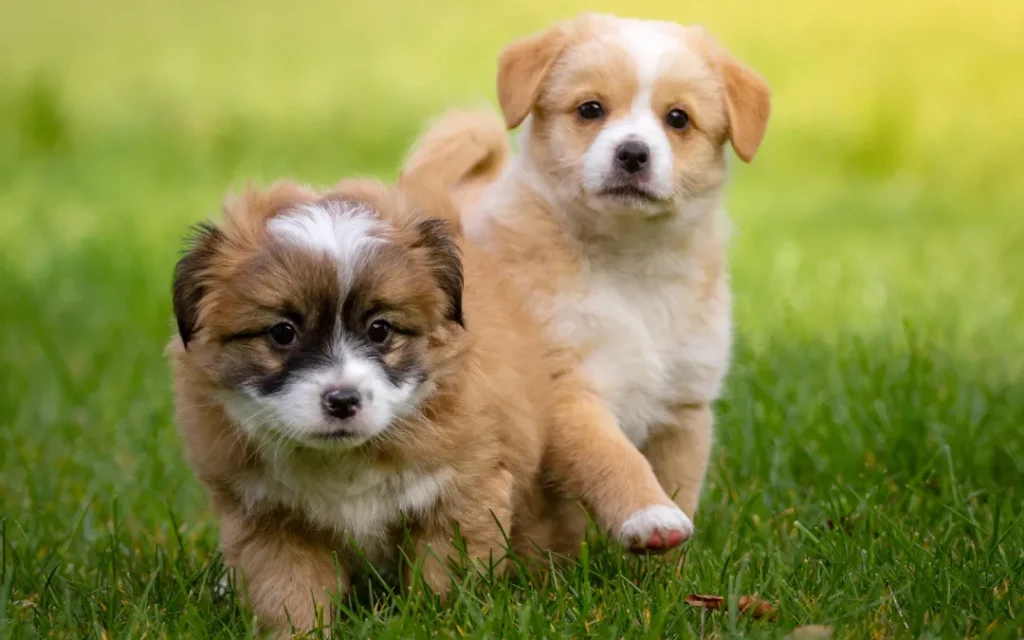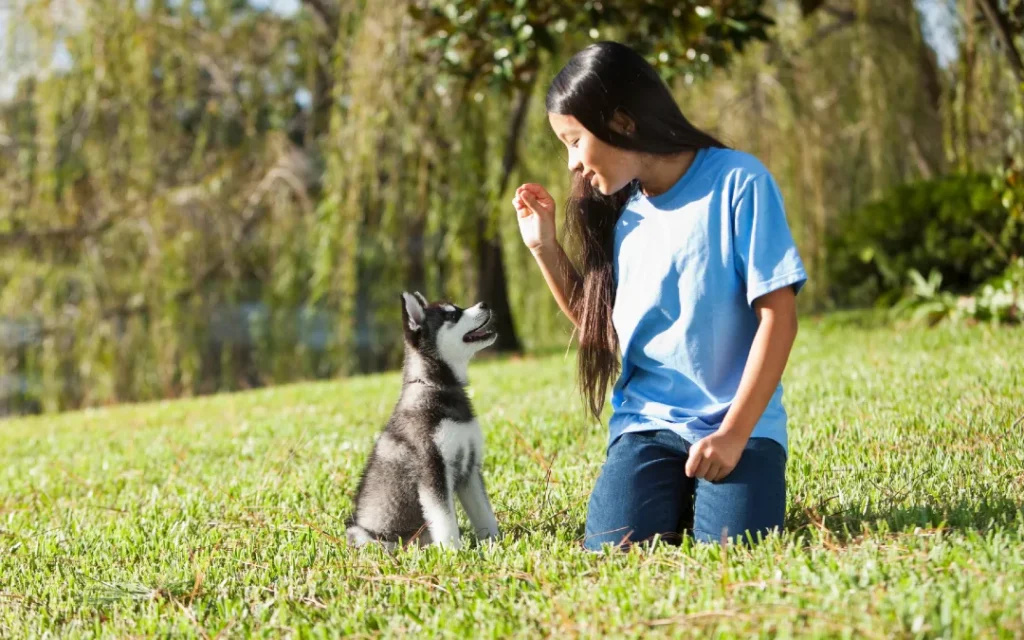Puppy eyes are cute until they’re paired with a fresh puddle on your favorite rug. It’s all fun and games until you find yourself clinging to the edge of your bed while your 40-pound cuddle monster hogs the pillow and breathes directly in your face. But here’s the thing: crate training isn’t about punishment. It’s about giving your pup a safe space, setting healthy boundaries, and maybe, just maybe, keeping your socks from becoming chew toys. At Off Leash K9 in Tacoma, we believe every little mess is a teachable moment, and crate training is where structure and cuteness finally meet.
Why Crate Training Works
Crate training is one of the most effective ways to build structure and confidence in a young pup. Here’s what it can do:
- Helps with potty training
- Creates a safe resting space
- Reduces destructive behaviors
- Makes travel and vet visits easier
- Supports training and consistency
When used properly, a crate becomes more than just a box. It becomes your puppy’s go-to spot for rest, calm, and a break from the chaos.
What You Need To Crate Train a Puppy
Before you start crate training, you’ll want to gather a few essentials. These tools help make the process smoother for both you and your pup.
- The right-size crate
Your puppy should be able to stand up, turn around, and lie down comfortably. Not too big, not too cramped. - Soft bedding or a crate mat
A cozy crate feels more inviting and helps encourage calm rest. Choose something washable in case of accidents. - Safe toys or chews
Add durable toys or teething chews to keep your puppy entertained and redirect any chewing. - High-value treats
You’ll use these often to reward good behavior and encourage your pup to enter the crate willingly. - A cover or towel for the crate
Covering the crate can reduce light and noise, helping your puppy settle down faster. - Patience and consistency
Tools are helpful, but your attitude matters most. Stick with it, even when things get messy.
With these basics, you’ll be set up for success and make crate training a positive experience from the very first day.
How To Introduce the Crate
The first few days of crate training shape how your puppy feels about their new space. A positive start sets the foundation for trust, routine, and long-term success. Here’s how to approach it the right way.
Start With the Door Open
Let your pet explore the crate freely. Toss in a few treats or a favorite toy and allow them to enter at their own pace. Don’t rush to close the door. This phase is all about building trust and helping them feel safe.
Stay Nearby
Sit close to the crate while your puppy is inside. Your presence adds security and keeps them from feeling isolated. Use calm praise or gentle petting to reassure them during early sessions.
Use Positive Reinforcement
The moment your puppy enters the crate on their own is a big deal. Use food rewards or verbal praise to mark that good behavior. Every small win leads to bigger ones when you stay consistent.
Build a Daily Rhythm
Structure is everything. Design your week with regular crate time built around meals, potty breaks, and naps. Puppies learn best when there’s a predictable routine.
Know the Time Limits
Young puppies can’t hold it forever. A general rule is one hour of crate time per month of age. At night, longer stretches are fine as long as they’re comfortable and have gone potty beforehand.
Watch for Signs of Progress
If your pup enters the crate without hesitation or settles in after a few minutes, that’s a great sign that the training is working. These little moments show that they’re completing each step with growing confidence.
Keep It Positive
Never use the crate as punishment. If your puppy whines or barks, resist the urge to scold. Wait for calm, then reward. Your reaction is part of the training.
Use Support When Needed
If things stall or your puppy isn’t responding, reach out to trainers who specialize in crate training. Sometimes the best answer is a fresh approach from someone who’s worked with all kinds of dogs and learning styles.
Common Crate Training Mistakes To Avoid
Even with the best setup, crate training can go sideways if a few key things are overlooked. Here’s what not to do:
- Forcing your puppy inside
Shoving them into the crate creates fear and breaks trust. Always let them go in voluntarily, especially early on. - Using the crate as punishment
Never send your puppy to the crate when you’re angry. It should feel like a safe space, not a penalty box. - Leaving them too long
Puppies have small bladders and need regular breaks. Keeping them crated for too many hours can cause stress and accidents. - Letting them out when they whine
If you open the door while they’re fussing, they’ll learn that noise gets results. Wait for calm, then reward it. - Skipping the routine
Inconsistent crate times lead to confusion. Stick to a regular pattern so your puppy knows what to expect.
Avoiding these missteps helps your puppy stay calm, confident, and comfortable in their crate—no confusion, no setbacks, just progress.
How Crate Training Helps With Socialization
You might not think about it at first, but crate training actually helps with socialization. After time spent around new people or other dogs, the crate becomes a quiet place for your puppy to decompress.
A well-rested dog is more likely to be confident and calm in new environments, whether it’s a training class or a walk around the neighborhood.
Group Classes or Private Lessons?
Some pups do great in group classes. Others benefit more from private lessons, especially if they’re shy, reactive, or easily distracted.
At Off Leash K9, we offer flexible options for dog training in Tacoma that match your puppy’s personality and your schedule. Whether you go the group route or prefer one-on-one time, crate training is often part of the plan because it creates the structure every dog needs to succeed.
Contact Off Leash K9 in Tacoma for Successful Puppy Training
Every puppy is different. Some catch on fast. Others need more guidance. We help you create a personalized plan that works with your dog’s learning style and your household’s routine.
Crate training is just the beginning. Let’s build the full picture with real training, real results, and a puppy that grows into a confident, well-behaved companion.
Call today or send us an email to learn more about how we can help.




